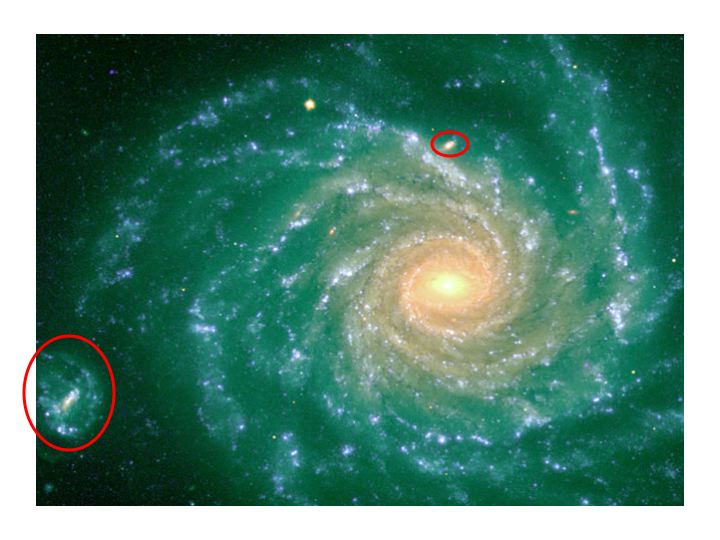As promised
Nereid wrote:Aristarchus, your lengthy post contains many logical errors, and several science (physics) ones as well; however, the most glaring is that it does not actually speak to the intrinsic redshift of Arp, per the Thornhill source I cited. I'll explain this in more detail in a later post.
In no particular order:
Aristarchus wrote:The laboratory experiments that tend to give credence to Arp's intrinsic redshift are noted by Brynjolfsson, and this relates to Arp stating:
(highlight added)
Which is rather different from Arp citing, or quoting, the laboratory experiments that Brynjolfsson notes, isn't it?
Now if, instead, you could quote from a paper by Arp, citing Brynjolfsson ...
This [the laboratory experiments that tend to give credence to Arp's intrinsic redshift] is confirmed by the following link [...] It is as follows:
What follows contains nothing on intrinsic redshifts, and only the vaguest of hints of any connection with what Brynjolfsson states.
Your next unqualified benchmark concerning the mathematical function of monotonic as ancillary to your original question, was answered from the quote provided by Eric Lerner:
OBSERVATIONAL FACT
"The number of absorption line systems seen in Lyman alpha does not monotonically increase with redshift. Low-z quasars such as 3C 273 (z = 0.16) have as many absorption systems as high-z quasars."
OK, so what did I actually write?
Nereid wrote:So, central to the question I actually asked are features such as:
* a monotonic relationship between 'age' and redshift quantisation (the older, the lower the redshift)
* a relationship between speed (away from the parent) and age
* a monotonic relationship between age and mass
Sure, both my 'features' statement and Lerner's contain the word 'monotonic'; but they refer to two completely different things!
In mine, the Arpian intrinsic redshift feature is this: a quasar is born, and ejected from its parent galaxy's nucleus. It starts life with a high redshift. As it ages (and moves away from its birthplace), its redshift decreases (or, possibly, remains constant); as it ages, its redshift does not increase again.
Lerner is talking about the Lyman alpha forest, and absorbtion line
systems (there may be several other absorption lines, MgII say, with the same redshift as a particular Lyman alpha absorption line); the
number of these
systems is not a monotonic function of redshift.
Thus, at this stage of the discussion, we have the following:
1. There are laboratory experiments that tend to confirm the intrinsic nature of redshift posited by Arp concerning "knots" & "lumps."
2. There are laboratory experiments that tend to confirm the redshift as present by the establishment science in the form of spectroscopic experiments.
However, as it relates to numero dos, these spectroscopic experiments do not appear to comport with the observation, as mentioned by Lerner regarding Lyman alpha.
You don't actually say so, but I guess it's some things in Brynjolfsson's paper(s) that you have in mind for numero dos, right?
Having dealt with your apparent misunderstanding of what Lerner wrote, time to move on.
Nereid wrote:In the Peratt's Plasma Universe Down thread, I learned that these words appear on that webpage: "The Plasma Universe and Plasma Cosmology have no ties to the anti-science blogsites of the holoscience 'electric universe'." Why? And what did the writer, of those words (Peratt?) mean by 'anti-science'?
And this pertains to your question, how?

If you'd've quoted the next para, you'd know:
Nereid wrote:Have you wondered, Aristarchus, that the sorts of rhetorical devices you seem to be so enamoured with might contribute to the formation of an opinion about a site being 'anti-science'?
In other words, I was asking you a question, about the way you construct arguments/ideas/comments, not what Peratt thought of Scott or Thornhill.
Anyway, I'll likely take this up in another thread, at another time; I think it's an important question that I think should concern the Thunderbolts Project team members.
Aristarchus wrote:I'll wait your response, but I'm beginning to feel that I could supply, at least on this topic, a post that will provide a litany demonstrating the lack of concatenation on your part. I think I'm justified in doing this, since your main complaint appears to be that of not being understood.
I think that'd be a very good idea (though how you decided that my main complaint appears to be that of not being understood I do not know; it's true of many of our exchanges of posts, but you are but one of the many Thunderbolts forum members I have been involved in such exchanges with).
To help you, please consider this:
* I made many mistakes, in the first month or so, in posting in this forum; I did not know what Electric Universe theory was (and am still learning)
* I did not know what Electric Universe theory publications were, until about a month ago (e.g. I thought TPODs were such publications, silly me)
* I have only just realised how few the number of alternative theories of physics (or models, etc) Electric Universe theory includes (Arpian intrinsic redshifts is, perhaps, the most prominent).
It also took me some time to adjust to the new six-posts-a-day-tops rule (I still find adhering to this difficult).



